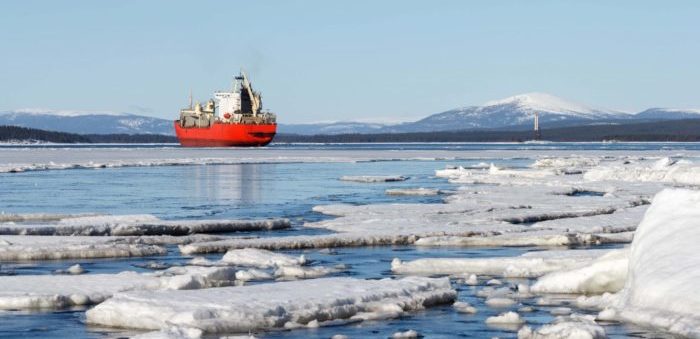For the Asian countries sea ice in the Arctic will continue to decline, the price of oil will rise and the volume of ships sailing on northern routes will grow, Arctic Journal reports
The Northwest Passage is a sea route connecting the northern Atlantic to the Pacific Ocean, via waterways that extend through the Canadian Arctic Archipelago. For centuries, the harsh climate and ice-choked seas made the area inaccessible. Nowadays, due to climate change, the trip isn’t nearly so daunting.
Last month, a Crystal cruise ship, Crystal Serenity, completed its historic 32-day Northwest Passage journey, becoming the largest passenger vessel to sail the icy Arctic waters of Canada. The cruise line has scheduled same voyage for next year as well.
But, does Northern Sea Route, north of Russia, and the Northwest Passages, through the Canadian Arctic provide time and cost saving shortcuts for the world’s shippers?
According to Bloomberg, although Arctic is warming, it remains ice-covered most of the year. Ice and shallow waters are not just navigation hazards. The risks that they have in store can take a big bite out of the potential cost savings of an Arctic voyage. The short history of shipping in the region makes risk assessment difficult, while fear of being associated with a high-profile accident makes insurers skittish.
Perhaps the biggest problem is that the business case for Arctic shipping is weak. Major international shippers create routes with lots of intermediate stops, Bloomberg adds.
Furthermore, the volume of transit shipments – traffic not destined for an Arctic destination – on the Northern Sea Route, generally a bellwether of interest in Arctic shipping, stands at about 200,000 tones this year, according to the Northern Sea Route Information Office, a Norwegian outfit that works develop Arctic shipping. That is about five times the amount shipped last year, but more than a million tonnes below its 2012 peak.
Accoding to a study titled “Arctic shipping – Commercial opportunities and challenges” by Copenhagen Business School, following these changes in the Arctic environment, the last decade has seen an influx of maritime activities in the segments of liquid bulk shipping, offshoring and cruise tourism
For now, Arctic shipping has received more attention from Asian shipping firms than from big Western shippers partly due to geography and a larger volume of commodities being sailed towards Asia. Another reason is a long-term outlook made possible by better co-ordination with authorities, particularly in the case of Cosco, a Chinese state-owned firm. Cosco has been involved in gradually more ambitious efforts to sail and ship goods on the Northern Sea Route.






























































